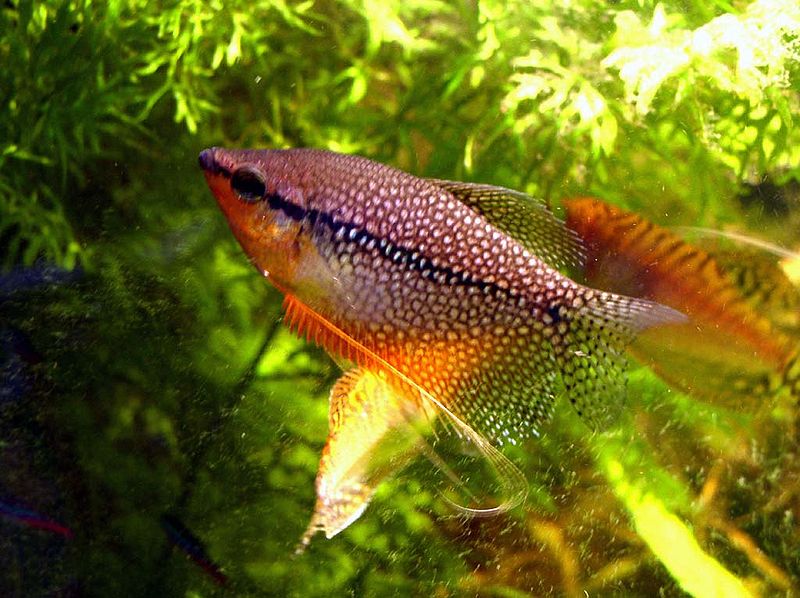 Everyone has that one fish that started it all for them. Most aquarists can remember that one species of fish that got them hooked into this hobby. Maybe it was an Oscar that would beg for food like a dog, a pair of black convicts that would spawn like rabbits every few weeks, or maybe those beautiful fancy tailed guppies got you interested in keeping fish. For me, it was the Pearl Gourami. I can still recall seeing that first adult trio of Pearl Gouramis in a fully planted aquarium. I was amazed at how the male almost glowed when he was around the two females.
Everyone has that one fish that started it all for them. Most aquarists can remember that one species of fish that got them hooked into this hobby. Maybe it was an Oscar that would beg for food like a dog, a pair of black convicts that would spawn like rabbits every few weeks, or maybe those beautiful fancy tailed guppies got you interested in keeping fish. For me, it was the Pearl Gourami. I can still recall seeing that first adult trio of Pearl Gouramis in a fully planted aquarium. I was amazed at how the male almost glowed when he was around the two females.
Pearl Gouramis (Trichogaster leeri) are native to Thailand and Indonesia. They are a subtly colored fish that has been available in the aquarium hobby for a very long time. Living in swamps and streams, Pearl Gouramis are found in thickly vegetated areas, often in shallow acidic water. Adult males are tan with tiny white speckles all over their bodies. A blue sheen overlays their bodies, and under diffused lighting they almost shimmer. Males develop a deep red breast that intensifies as they mature, and his anal fin develops filaments that create an lacey edging to the fin. The female, while being a bit less colorful, is still a very beautiful fish with tan coloration and the white speckling. Both sexes can attain a size of about 4 inches.
As with most gouramis, the Pearl Gourami spends much of its time near the surface and appreciates floating vegetation. Their love for dense vegetation makes them an ideal choice for planted aquariums. While being somewhat shy, in a heavily planted aquarium these fish drift in and out of the plants and become increasingly less reclusive. Keeping Pearl Gouramis with small schooling fish like Brilliant Rasboras (Rasbora borapetensis) or Harlequin Rasboras (Rasboara heteromorpha) is ideal. The schooling action of the smaller fish encourages them to be in the open more.
Another trick to keeping Pearls happy is to keep them in a tank that has a slightly lower flow rate than a typical aquarium. Being blasted with water flow will cause them to seek out areas of refuge, often in the back of your aquarium. Turning your tanks water volume over 2 to 3 times an hour is just about right. Pearl Gouramis are not fussy eaters, but floating foods are often preferred. They will readily accept flake, freeze dried, or smaller pelleted foods.
Pearl Gouramis are a classic in the hobby and have been kept and bred by aquarists for decades. Their calm dispositions and attractive coloration have made them a fond memory for many hobbyists. If you have a community tank that is missing that certain larger fish to really set your tank off, this just might be what you are looking for! We actually just added 3 Pearl Gouramis to the large planted show tank in our fishroom, and it really does add that something special to the aquarium. What fish got you started in the hobby? We’d love to hear from you in the comments section below.
Thanks, until next time,
Craig
Pearl Gourami image referenced from wikipedia and originally posted by Alexander Siering
 That Fish Blog – Aquarium Advice and Information
That Fish Blog – Aquarium Advice and Information

